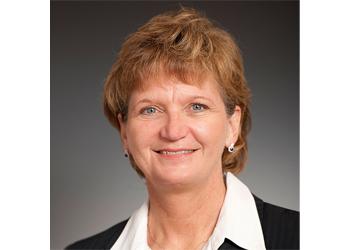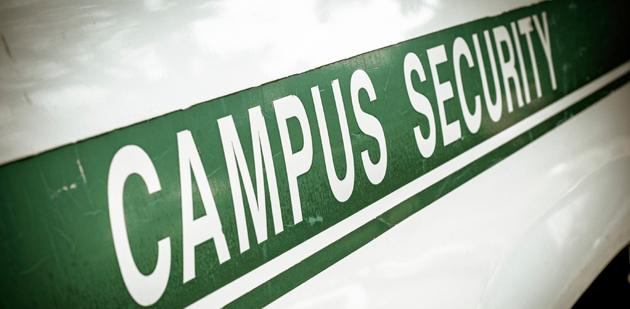
As acts of mass violence unfortunately continue to occur and make headlines, it reminds us that keeping our college and university campuses safe must continue to be a critical priority. Our guest this month, Kim Richmond, director of the National Center for Campus Public Safety, discusses how campus safety issues have changed and offers suggestions to address and manage these issues as well as highlight prevention. She also discusses her career in campus public safety and what she has learned about this important field within higher education.
Andrew Hibel, HigherEdJobs: Ms. Richmond, you have an extensive background in campus and public safety starting as a dispatcher moving to being a police officer to most recently the chief and director of public safety at University of Central Missouri. How have campus safety issues changed over your career?
Kim Richmond, National Center for Campus Public Safety: The most obvious answer is the impact technology has had on campus safety, both positively and negatively. From a communications standpoint, technology has increased campus safety’s ability to communicate effectively with our communities through the internet, social media, mass texting, and intercom and public address systems particularly during emergency situations. However, technology has also expanded the reach of criminal victimization, and has created challenges in conducting national and global investigations. Cyberstalking and identity theft were not terms that existed in the early 1980s.
Hibel: As the inaugural director of the National Center for Campus Public Safety, what are your goals to improve campus safety?
Richmond: The goals of the National Center for Campus Public Safety are to improve and expand comprehensive, centralized resources, training, and technical assistance specific to campus safety and emergency management to those charged with providing a safe campus, to connect campus safety entities, professional associations, advocacy organizations, community leaders, and federal agencies with one another, and to highlight and promote promising, innovative, and evidence-based practices specific to campus safety and emergency management challenges.
During our first year, we have developed a curriculum to provide campus officials involved in investigating and adjudicating sexual misconduct cases information and resources necessary to conduct trauma-informed investigations in line with evolving practices. We have conducted four pilot sessions of the training program, and in December will host a training course for additional course faculty bringing the delivery of this course public in 2016.
We have also developed a comprehensive web-based resource center that serves as an essential clearinghouse for campus public safety and emergency management resources, disseminated weekly electronic bulletins that provide an assortment of timely campus safety and emergency management resources, developed a free webinar series on a variety of topics relevant to campus public safety, provided technical assistance to numerous campus safety officials, and facilitated eleven focus group discussions with campus safety officials, emergency managers, administrators, and study abroad experts.
Future activities include a nationwide emergency management needs assessment, offering courses to campus law enforcement for training their communities on Civilian Response to Active Shooter Emergencies, mental health intervention training for campus safety officials, and additional focus group discussions on study abroad, urban policing, concealed carry on campus, and marijuana legalization.
Hibel: Most have heard of the recent terror events that occurred in Paris, and unfortunately, it heightens our awareness of the mass murders that have occurred on U.S. educational campuses. What are the three top items that must be a part of the campus safety action plan to help prevent occurrences like this?
Richmond: Community involvement is key. Emergency services personnel cannot be everywhere, and it is critical that members of the general public are aware and encouraged to report suspicious or concerning behavior and activity to authorities. Campuses must then have an appropriate process in place to assess behaviors and develop appropriate intervention strategies.
Higher education administrators must take the lead in creating and maintaining a campus culture of care, and provide resources that support those efforts.
Campus departments must work collaboratively with each other and with off-campus service providers to reduce the opportunity for gaps in communication and intervention needs. Campuses and their host jurisdictions must have a coordinated community response to violence or threats of violence and move toward an all-hazard planning approach.
Hibel: What can the White House and Congress do to help safeguard our colleges and universities from these acts of violence?
Richmond: Aside from making sure that the National Center continues to receive critical funding to provide resources to campuses, the White House and Congress can help the US Departments of Education and Justice to continue to prioritize campus safety into their agendas. The campus public safety profession has a lot of effective programs in place, and many are doing incredible work. I believe the federal government can work collaboratively with practitioners and experts in the field to be most effective in identifying areas of greatest resource needs, and then provide funding and expertise to address these concerns.
Hibel: Moving forward, what do you see as top priorities for college security?
Richmond: Campus security and campus policing have always applied community policing as a strategy. Even before community policing was a phrase, campus safety authorities were walking around their campuses, interacting with community members, especially students, and serving as a resource for problem solving. Having officials who know the pulse of the community is key to understanding the issues and being able to effectively manage incidents and crises. Campus safety and security is fundamentally about relationships and trust.
Hibel: What are the strategies that campus safety departments can and should employ to combat these priorities you discussed?
Richmond: Even with tighter budgets and limited resources, I think community policing should remain a priority for campus public safety professionals. Leadership must recognize the significance of providing resources that include enough staff to not only handle the daily calls for service, but also allows time for each safety official to interact informally with their community. In addition, campus safety must be viewed as an institutional responsibility and should be communicated in the institution’s mission statement. Universities and colleges must invest strategically in the right technology to leverage their limited human resources (e.g., security cameras; access control; electronic reporting systems, social media threat alert software; etc)
Hibel: How and on what topics can chief safety officers on campus educate staff, faculty, and students?
Richmond: It is important for the general public, including faculty, staff, and students to be well-informed about recognizing and reporting persons with behavioral concerns, and to have confidence in the campus’s response and intervention process.
They should also have information provided to them about response options to critical incidents. We know that in incidents of violence, our emergency service providers are not the first on scene. The citizens affected by the violence are the first, and should receive information to help them plan in advance and give them the opportunity to think about the choices they have for responding to various situations.
Prevention topics such as alcohol and drug issues, interpersonal violence, and sexual assault should become the work of all faculty, staff, and students. Using the public health approach, prevention efforts should involve the whole community, and is not just the work of one person or one department. A comprehensive environmental strategies approach provides the best results.
Hibel: Please describe the best practices for communicating on campus during a crisis.
Richmond: Campuses have had successes utilizing mass notification systems, social media, websites, emails, mass texts, smart phone applications, and localized intercoms/public address systems. Campuses also must train and conduct exercises with critical staff before an emergency to ensure familiarity with the process and the technology.
Hibel: What advice do you have for a professional looking to begin a career in a campus safety role?
Richmond: I have always told students that law enforcement, especially on campus, can be anything you want it to be. If you have an interest and talent for problem solving, we need you. If you have an interest and talent with technology, we need you. If you have interest and talent in photography, we need you. Law enforcement is a career that allows for people of various skills and talents to excel and have a rewarding experience. The added bonus for safety professionals on campuses is the opportunity to be more involved with the community and develop relationships. Campus safety is one campus department among many, and officials have a great opportunity to foster partnerships to improve the overall health and safety of students.
Hibel: If one of your prior employees on campus asked how they can follow in your footsteps, what would you tell them on how to move up in their role in public safety?
Richmond: I would encourage them to continue to be sincerely committed to helping people, and the cause of maintaining a safe environment for all. Involvement in campus/community collaborations is very rewarding. If you develop an expertise, you can always look for ways to improve current policies/responses, and also keep your mind open to new ways of doing things, while continuing to learn from others who have experienced community successes.
Hibel: What is the most rewarding part of your position?
Richmond: I am honored to continue to work alongside some of the most talented professionals in the field. The opportunity to interact with and learn from campus safety and emergency management officials across the nation is very rewarding. The campus safety community is a very caring, innovative, and dedicated population.
